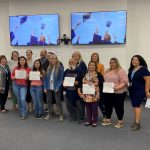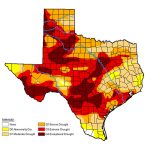Yesterday, California’s Department of Conservation opened a second application round for the state’s timely and in-demand Multibenefit Land Repurposing Program (MLRP).
Now through March 29th, Groundwater Sustainability Agencies and their local non-profit and public agency partners can apply for nearly $9 million block grants to plan for and implement projects that reduce regional groundwater demand and beneficially repurpose formerly irrigated farmland. Block grantees can use MLRP funding in part to provide payments to growers for voluntarily repurposing land to new uses that require less water and create benefits, such as habitat, community parks, restored floodplains, multibenefit recharge areas, dryland crops, managed rangeland, or low-impact solar. Direct funding is also available for federally recognized and non-federally recognized California Native American tribes that are working to reestablish tribal land uses, enact tribal cultural practices, acquire land or easements, and conduct other land repurposing projects.
The second round of MLRP funding is available at a pivotal moment when critically overdrafted groundwater basins are grappling with the challenge of balancing chronically depleted groundwater supplies while the state is still suffering from a multi-year drought, despite recent rain and snowfall.
California’s water supplies are becoming increasingly unreliable with climate change exasperating our state’s natural hydrologic variability. This precipitation whiplash is forcing water users from all sectors to take a hard look at their water demand, cut back where possible, and consider new water storage strategies, such as multibenefit groundwater recharge. In the San Joaquin Valley, 10-15% or more of irrigated farmland will likely come out of production to halt unsustainable pumping and safeguard reliable groundwater supplies for the future. However, unmanaged land fallowing and retirement without thoughtful planning and investment will result in a host of issues that can impact neighboring farmers and communities, such as the spread of pests, weeds, and wind-blown dust contributing to worsening air quality.
Early planning and strategic management are key to ensuring that formerly irrigated farmland is repurposed to new uses that create regional benefits for communities and ecosystems while also avoiding the negative economic, agricultural, and health impacts that come with haphazard land fallowing. The social and economic futures of many agricultural regions in California rely on better-managed groundwater, which can be supported by MLRP funded projects.
The Department of Conservation awarded the first round of MLRP block grants last summer, and already these regions are exploring customized approaches that fit their unique conditions and priorities. The first four successful block grantees were mostly led by Groundwater Sustainability Agencies in partnership with a number of organizations and agencies specializing in topics such as grower outreach, land conservation, and rural community engagement.
These diverse partnerships are allowing the first round of block grantees to envision creative approaches and projects that can benefit a broad array of stakeholders in their regions. For example, in the Lower Salinas Valley, MLRP block grantees are looking to use their funding to provide payments to growers for voluntarily converting farmland along the flood-prone Salinas River to restored floodplain, reducing local community flood risks, creating much needed habitat, and improving water quality conditions. In Madera County, MLRP block grantees are exploring a strategy to pay landowners for voluntarily reducing groundwater pumping near vulnerable community drinking wells, helping the region reduce its groundwater demand while also improving the reliability of rural water systems. Creating multiple benefits and partnering with other organizations are not only requirements of the Multibenefit Land Repurposing Program but also help make applicants more likely to receive funding. The first round of MLRP funding was highly competitive and we saw these three common themes among the successful applicants.
Those interested in applying are encouraged to join a Department of Conservation hosted online application workshop on Wednesday, February 22, 2023. More information on the program, application and online workshop can be found on the MLRP website. Environmental Defense Fund (EDF) is proud to partner with Self-Help Enterprises (SHE) to co-chair the MLRP Statewide Support Entity, a collaboration formed and funded by the Department of Conservation to provide support to MLRP grantees and applicants. If you are interested in applying for MLRP funding and have further questions, please contact the Department of Conservation at mlrp@conservation.ca.gov, EDF at aschiller@edf.org or SHE at sonias@selfhelpenterprises.org.












